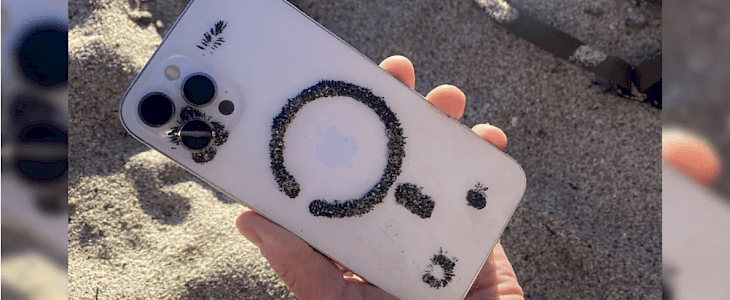
MagSafe is a wireless power transfer or wireless charger that is magnetically connected.
Previously, the MagSafe feature was only available for MacBook notebooks, but Apple extended it to iPhone 12 phones last year. A user of an iPhone 12 recently discovered that his phone absorbs Iron from sand in Lake Tahoe.
iPhone 12 MagSafe attracts Iron
Between the speakers, camera stabilizers, and MagSafe on the iPhone 12, more magnets have been added since the release of the iPhone 12. Magnetic objects would be drawn to the phone by these points.
A user of the iPhone 12 posted a photo on Reddit that shows the phone's backside attracting sand in areas such as the MagSafe concentric circle, near the camera, and speakers, as first spotted by AppleInsider. Other sections of the phone, on the other hand, are spotless.
Tahoe lake sand was gathered by the phone. Its sand is made up of various rocks that have been pulverized over time. Iron oxides, pyrites, and magnetite are also present. Despite the fact that these elements were gathered on the phone's backside, the phone display, speaker holes, and ports were not visible.
These elements are not harmful, although there are others, such as ferrous metals in the sand, workshop shavings, knives, and so on. These particles will scratch the phone's display and harm the camera.
While the iPhone 12's MagSafe feature is useful, it can have an adverse effect on users. However, it has been revealed that the iPhone 12 poses a low risk. Apple also provides some safety tips, such as holding the iPhone in a sealed case or Ziploc bag while visiting industrial areas or dangerous areas with ferrous dust.
What is MagSafe?
Since 2006, MagSafe has been a proprietary magnetically-attached wireless power transfer and accessory-attachment standard used on the Mac series of notebooks. Apple Inc. released the latest edition on October 13, 2020, along with the iPhone 12 and 12 Pro series.
There are still some disadvantages along with some advantages. We hope you find this knowledge to be useful. Come back to see us for more of the same!





